Disclosure: As an Amazon Associate I earn from qualifying purchases.
Why should you create a podcast? Well, the answer is simple enough. Podcasting is a way of reaching your online audience using your voice on recorded audio files. It’s similar to having your own radio station or an audio version of a blog. Just think about the traffic and the fellowship it can bring to your content!
The audience for podcasts is recording faster growth than that for blog readership. At least four out of every ten Americans have listened to an online podcast according to recent reports. According to the latest Google trends, online searches for podcasts have surpassed searches for blogs. So, it’s the right time to start one.
Also, advertising revenues for podcasting grew by 80%+ per year according to the Internet advertising bureau. All the largest corporations such as Google or Apple have taken note of this with their release of a dedicated podcast app which makes finding podcasts online easier. It’s easy to see why starting a podcast could be a great idea.
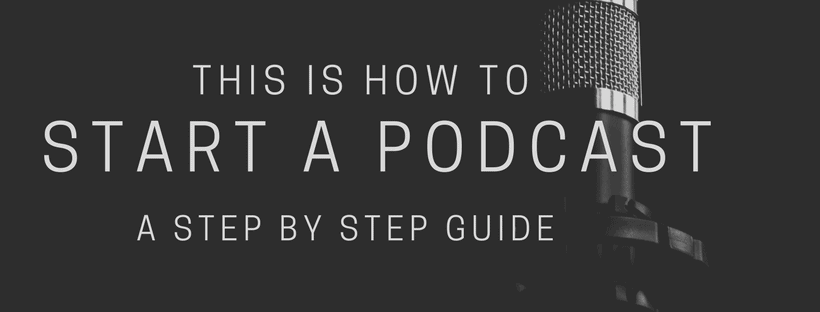
The wide listenership it enjoys makes it an attractive complement to running a blog and could even help you increase your blogging audience. It’s easier for an average person to connect and engage more with a podcast than with a blog as hearing someone speak his/her views is more personal than reading an author’s thoughts. This makes them place more trust in podcasts than in blogs as it is believed they present a more authentic voice.
Right now, podcast content lags demand according to Google trends which makes it a good time for you to start a podcast. So, if you believe you have what to say, a message to deliver, or amazing content to speak about, then you’re more than ready to start your own podcast. Here is a step-by-step guide to help you through the process.
Hot to Pick a Reliable Podcast Hosting
Picking a great podcast hosting provider is a must as you will need this to be able to distribute your show via RSS feeds, online podcast directories, and podcast apps. For a user-friendly experience, we recommend the Podbean podcast publishing platform. It has different categories of podcast webhosting including a free option.
Our most recommended Podcast hosting service is Podbean, which is a full-featured podcast hosting platform with unlimited storage and bandwidth, iTunes and play store support, search engine optimized, your own domain, and branding. The first month is FREE!
Register on Podbean podcast hosting >>>
Or, if you didn’t like it, we can suggest trying the podcasting host Blubrry, which provides unlimited downloads, the possibility to cancel anytime, and optimization for Apple and other podcasting platforms.
Register on Blubrry podcast hosting >>>
Let’s continue.
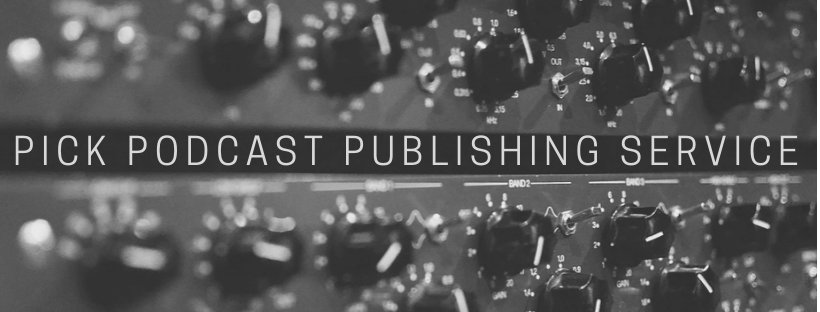
How to Acquire a Reliable Podcast Microphone
A good and reliable microphone suitable for podcasting is essential to ensure your message comes out loud and clear with good sound and isn’t interrupted by technical issues. This should be your first step as the quality of your microphone can make or break your podcast.
If you are looking for a quality podcast microphone that’s not too expensive we recommend the Samson Q2U, Audio-Technica ATR2100, or the Blue Yeti microphone. It’s a USB microphone that you can plug into your laptop, desktop, or tablet and retails for around $100. Those podcast microphones are being used by many podcasters today. You can check it as well as complimentary products like microphone stands, pop filters and more.
For more expensive ones, we recommend the Rode NT-USB Cardioid Condenser Microphone or the Audio-Technica AT2020 podcast microphones.
For now, as a beginner, there’s no need to get mixers, portable recorders, and headphones. The microphone is the only technical equipment you need for now to start podcasting.
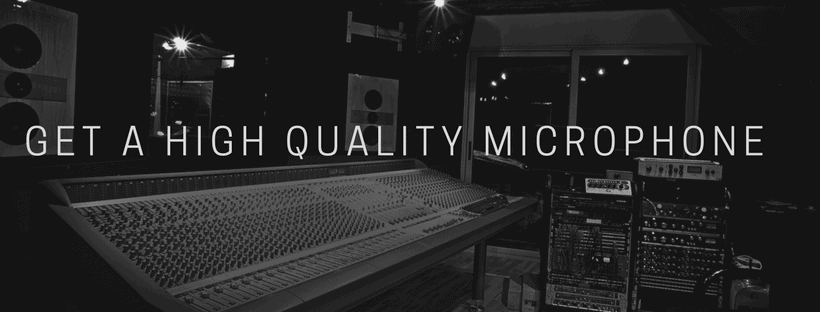
Create Great Content and Podcast Title
First, you have to know what you want to talk about. Make sure you have an in-depth knowledge of your topic. Conduct research on it so that you come across as knowledgeable. Then choose a title/name for your podcast. This should reflect your topic or the host depending on the circumstances.
Make sure you plan your podcasting routine beforehand as it will make your job easier. Decide how often you will be podcasting (Daily, weekly, biweekly, etc.) as well as when you will be podcasting. We recommend that you start with a twice-weekly podcast.
Then get the topics you will be covering as well as when you want to podcast them depending on your prearranged schedule. Make sure you have enough topics to cover a particular time period as that will make your podcasting routine easier. With all your topics researched beforehand, recording your content will be a breeze.
Make sure your topics are scheduled in a logical order. For example, if you’re podcasting about music, make sure you schedule ‘songwriting’ before ‘studio recording’. Some topics can be very broad so we advise that you break them into subtopics that you can cover within a given time frame. With this, you could take a month or a period about a particular theme, for instance, October could be ‘marketing month’.
Get a Well-made Podcast Cover Image
Packaging, they say is everything. Make sure you have a great cover image for your podcast. This will help convey an image to your audience as well as an arsenal in your marketing plan.
Get a professional graphic designer to make your podcast cover image. You can get them at an affordable rate on freelance sites like Fiverr.
Register on Fiverr and create your cover for the podcast >>>
Have a good idea of what you want your cover image to look like. Provide a rough sketch of what you want to your designer so he will be on the same page with you. The cover image has to project your personal brand so make sure the designer gets the graphics and style to match it.
Avoid cluttering your art with too many details so that potential listeners will be able to identify it clearly in a small format. It should be readable even at 200px wide.
Ensure your cover image is clear and visible even when small. This is to ensure visibility when it appears as a thumbnail image which is how most podcast streaming services project their content.
Your cover art should be in JPEG or PNG format, should have 1400 x 1400 pixels, and be a maximum size of 500kb. These specifications should help you avoid issues with podcast directories.
Register on Fiverr to create your podcast cover image >>>
Have a Great Outro, Intro, and Voice Over
This will be used to tell listeners the name of the podcast, who the host is, and what you expect to hear in that particular episode. It’s similar to the theme song and opening credits of a TV program. Having a great intro, outro, and voice-over will help set your content apart from others and draw in more listeners.
To get professionals to help you do a quality job at an affordable price, check out freelance sites like Fiverr where you could get a voice-over artist at $5. For an additional fee, he/she could also add music to the voice-over.
Register on Fiverr to create your podcast voice-over, outro, and intro >>>
Produce and Edit Your Content
Listeners will be expecting a high level of production on your podcast so you have to ensure your production level stands out. Even if it’s just simple elements like intro music, episode introduction, background music, story introductions, and telling as well as the ending, make sure your production values are top-notch as this is essential element listeners use to judge a podcast.
You could hire someone to edit your audio files. Alternatively, if you want absolute control over how your finished podcast sounds, you could do the editing yourself. There are tutorials all over on how to do this as well as free editing software such as Audacity, one used by a lot of podcasters.
Get Your Podcast on iTunes and Other Platforms
Now that you’ve produced those first podcast episodes, you must get them to where there are a lot of potential listeners and the number one place for this is iTunes.
It hosts the majority of the podcasts out there and is the first place where most people look for podcasts so applying here is a must. iTunes has most of the podcast directory market through Spotify and Google music is growing.
For an easy how-to guide, check this link. It’s on Podbean, the podcast hosting service we previously recommended.
Get Your Listeners to Subscribe and Review Your Content
Podcasts with a lot of positive listener reviews on iTunes appear in the ‘New and Noteworthy‘ section. This helps increase their visibility and even attracts more listeners. You want your podcast here when you get on iTunes so at the end of each episode, tell your listeners to subscribe and leave a review about what they think about the show.
If you have a blog, embed a podcast player on it or include a link to your podcast. Appeal to your blog readers to subscribe to it and leave reviews.
Benefits of Starting a Podcast
Maybe you are still not sure if it’s worth the effort to create a new podcast and start this journey, but, let me assure you that podcasting got many benefits. For example, making a podcast will allow you to create a new relationship with your friends, community, and potential customers if the podcast is commercially oriented.
Also, podcasting will allow you to create a lot of new friendships in the area you will podcast about. It can be for a common hobby, or business benefits in case you looking for those. And most importantly, podcasting will establish you as an expert in the field you started a podcast about. You will become a trusted voice for any related question or opinion which will transform the growth of your personal brand.
Now you’re ready to begin podcasting. At the start of it, when you learn how how to speak to the microphone, you might get a bit too self-conscious and sound robotic. But don’t worry. Just relax and be yourself as you record your show. With practice, you will sound better and each podcast episode production will get easier and smoother.
Remember, people want to connect with the person behind the microphone so feel free. Express your emotions if you can as that’s what makes us human. Forget about hiding your accent if you have one. With time and diligence, you will have listeners begging you for more episodes.
In Conclusion
To sum it up, the services and equipment we recommend are:
- Podbean – our recommended hosting for podcasts, unlimited and free for 30 days!
- Blubrry – alternative hosting for podcasts, unlimited.
- Fiverr – great freelancing site to order your podcast cover and audio effects.
- Blue Yeti microphone – reliable and affordable microphone for podcasting.
- Rode NT-USB Cardioid Condenser Microphone or the Audio-Technica AT2020 for a professional podcast microphone.
- Audacity – free audio editing solution.
Now you know the basics needed to start your podcast. So keep on recording, producing episodes, and enjoying what you do. Please leave a comment if you got any questions.
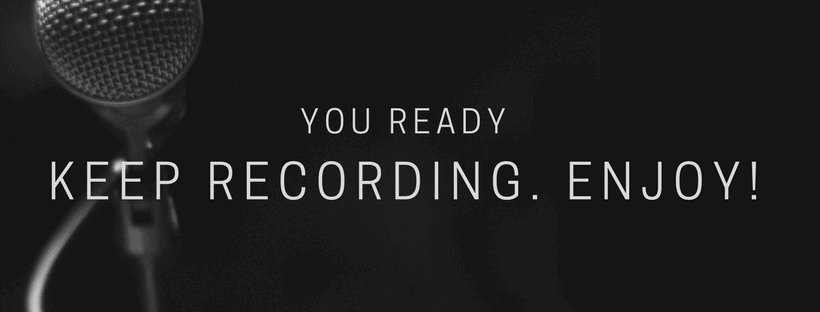
- 10GbVPS Review – Review Their VPS Hosting Services (2024) - June 1, 2024
- BlueServers Review – Unbiased Look at Their Dedicated Hosting Services (2024) - June 1, 2024
- 10 Best Programming Languages For Web Development - February 27, 2024

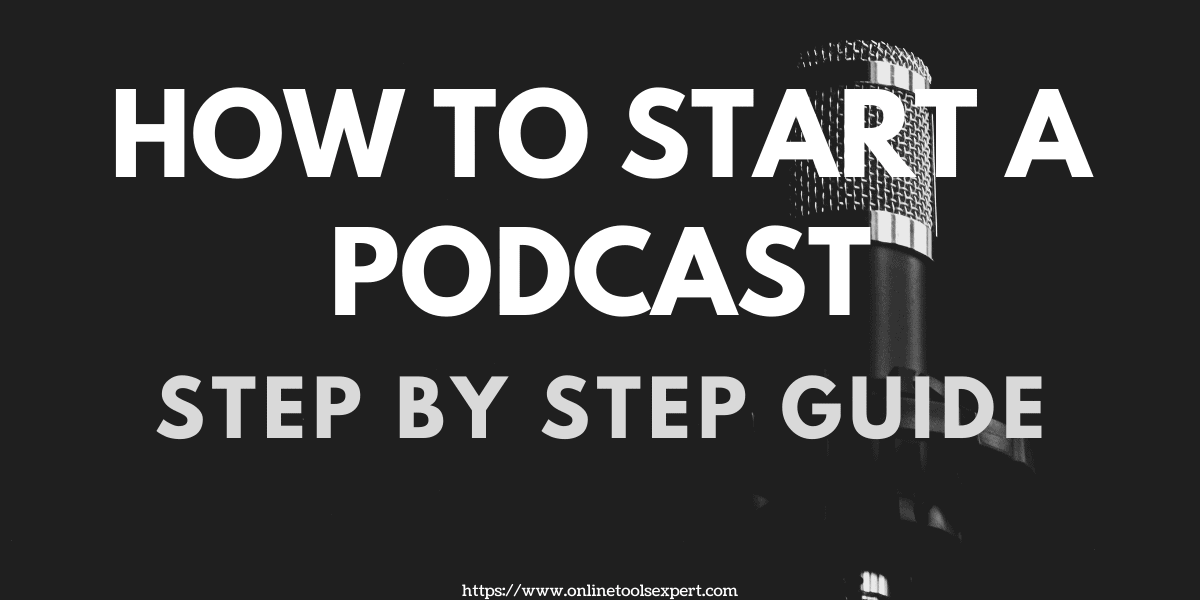
Podcasts are gaining in popularity today. Listeners like to chance interesting stories, useful information, and interviews.
Bloggers like to share their lives and interesting stories. But, for both sides of this class, a good sound recording is an important part.
To ensure this aspect, you need to use quality techniques and have good skills in podcast creation. But the main tool for each podcast is the microphone.
I agree, to have a great Podcast, you must acquire fine podcasting equipment.
I gone through your article & must say it gave me a good amount of understand about Podcasting, but can I start a Podcast in Hindi as I live in India?
There is no problem with that. You can have a podcast in any language.
Thanks for this, it really helped me to start my first Podcast.
Sure, happy to assist!
I like how you mentioned creating a unique opening and outro for your listeners. My brother and I want to start a podcast this month together focusing on drones. We’ll be sure to have the right equipment before starting to record.
Yes, having a unique Podcast opening and outro is a great future, that truly makes your podcast stand out from the crowd, and if you lack the technical skills to do it, there are tons of great gigs on Fiverr just for that.
Thanks for explaining that you need to hire someone to make a great intro and outro. I’m hoping to start a podcast this summer. I’d really like to talk to my husband to see if he would want to host it with me.
NP. Whishing you the best. The podcast intro and outro, are probably the only parts that need a professional.